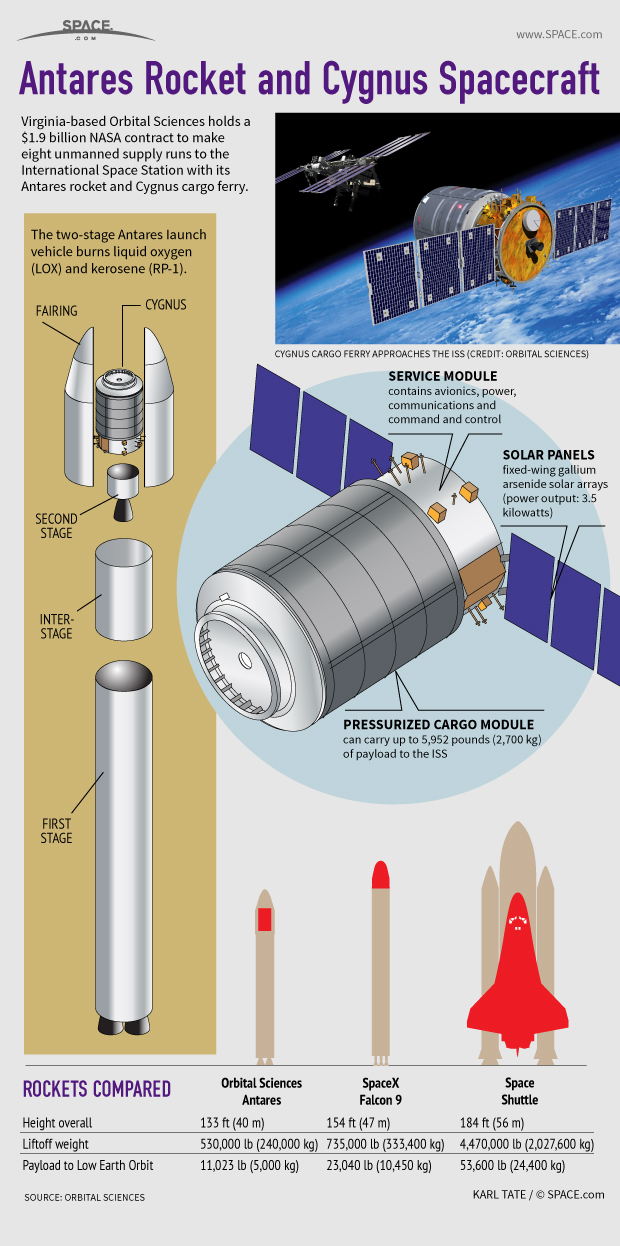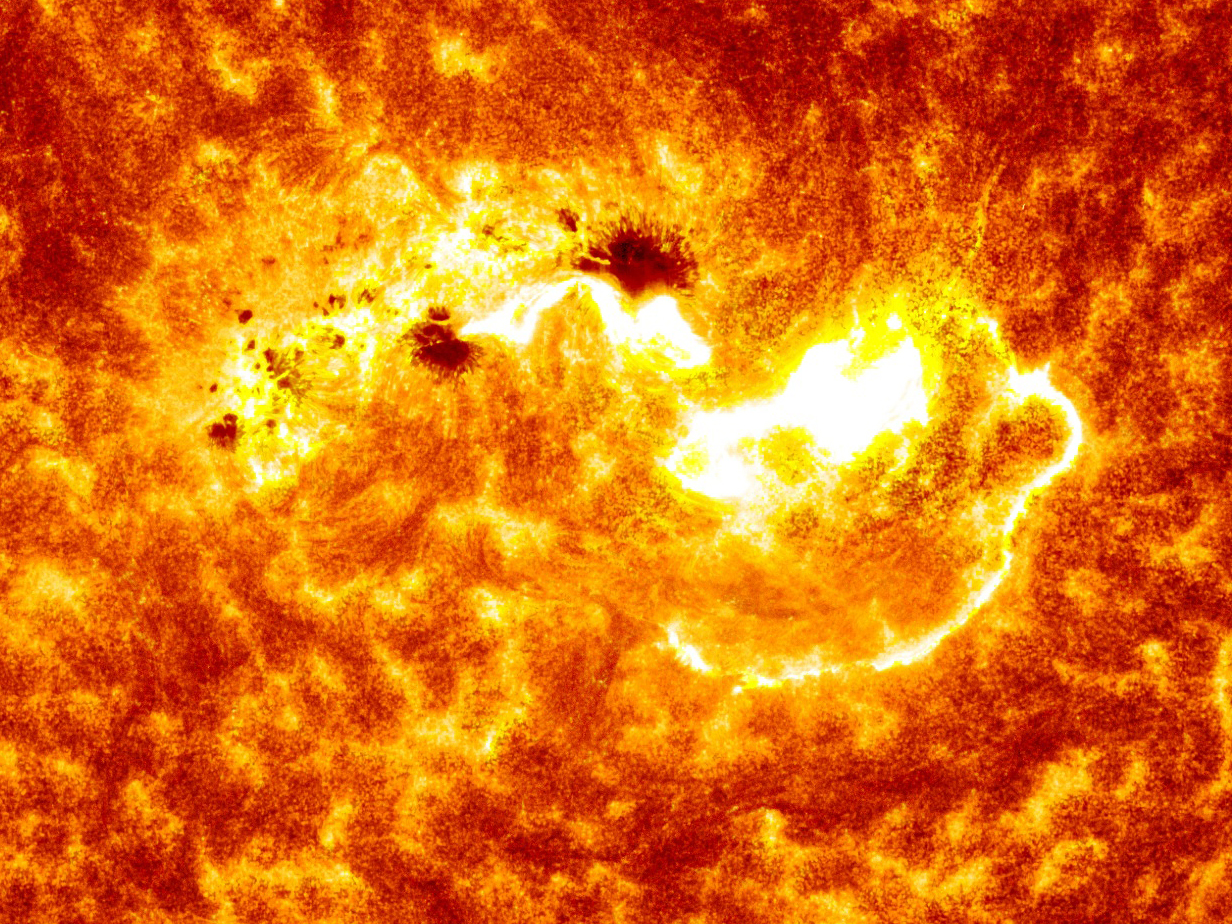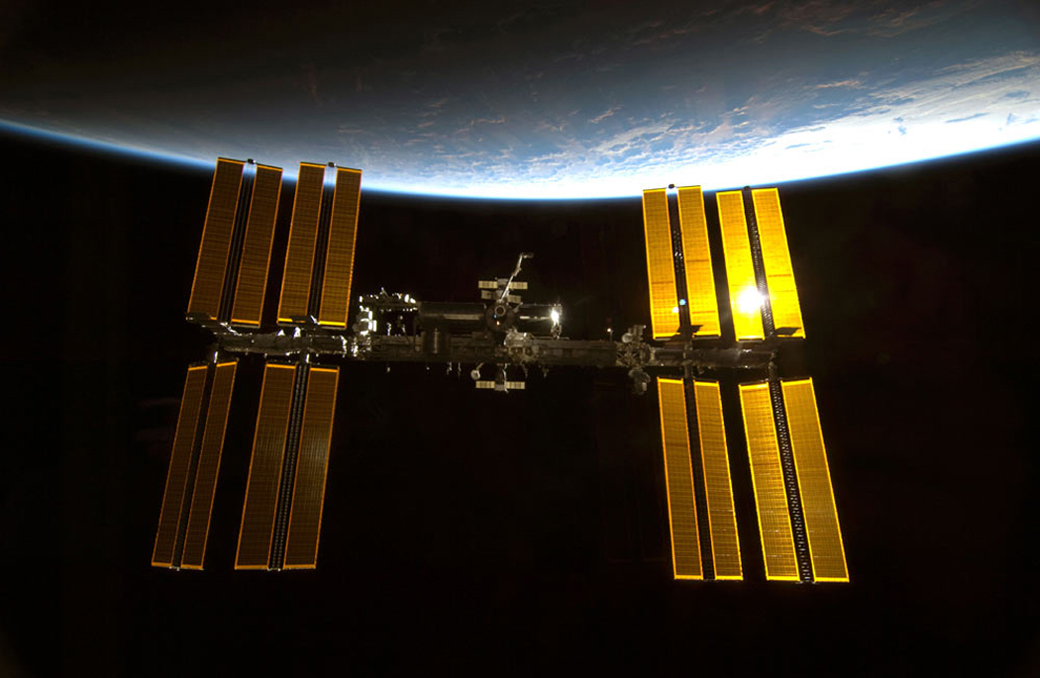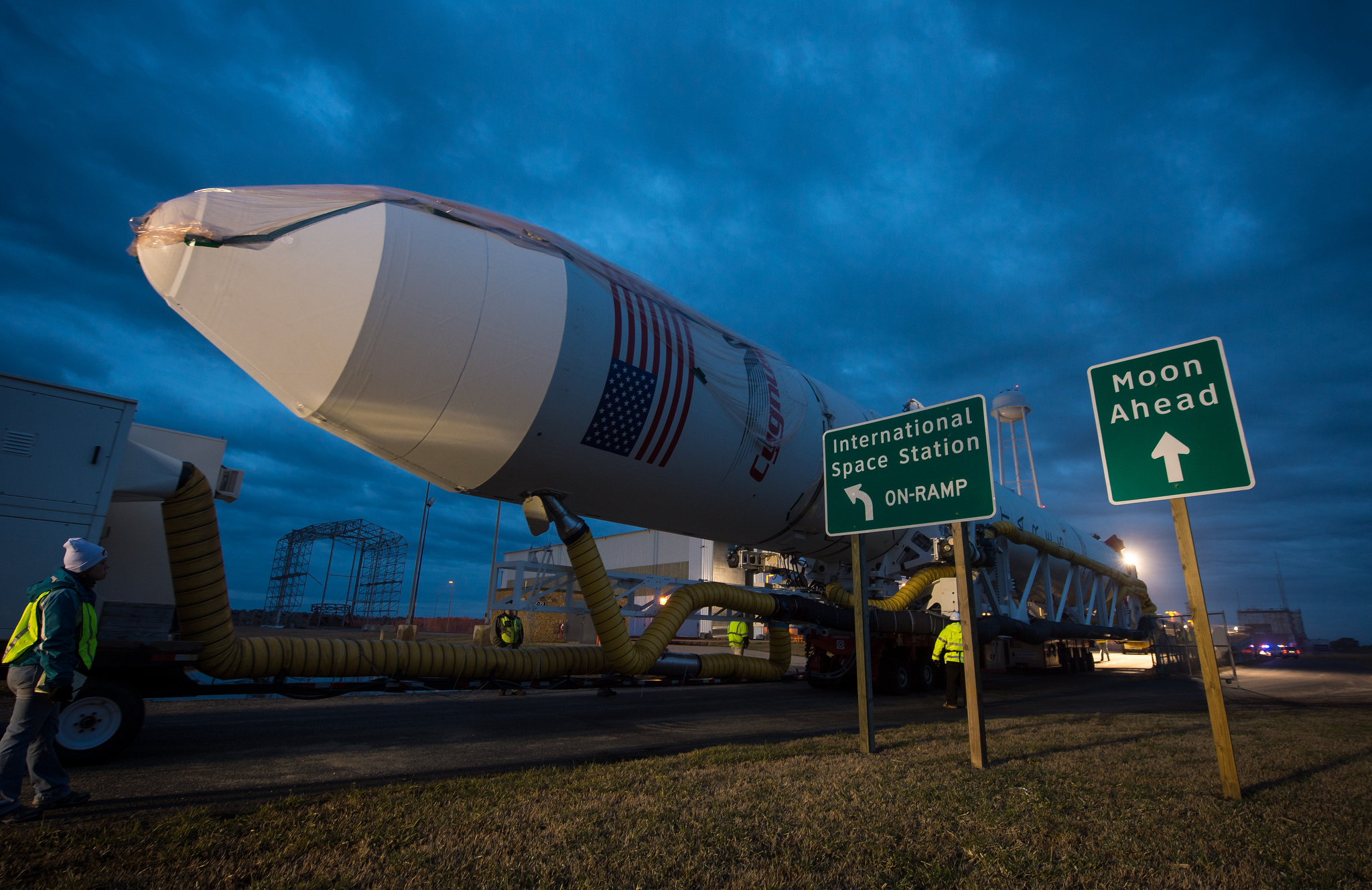Private Cygnus Cargo Ship Launching to Space Station Today: Watch It Live
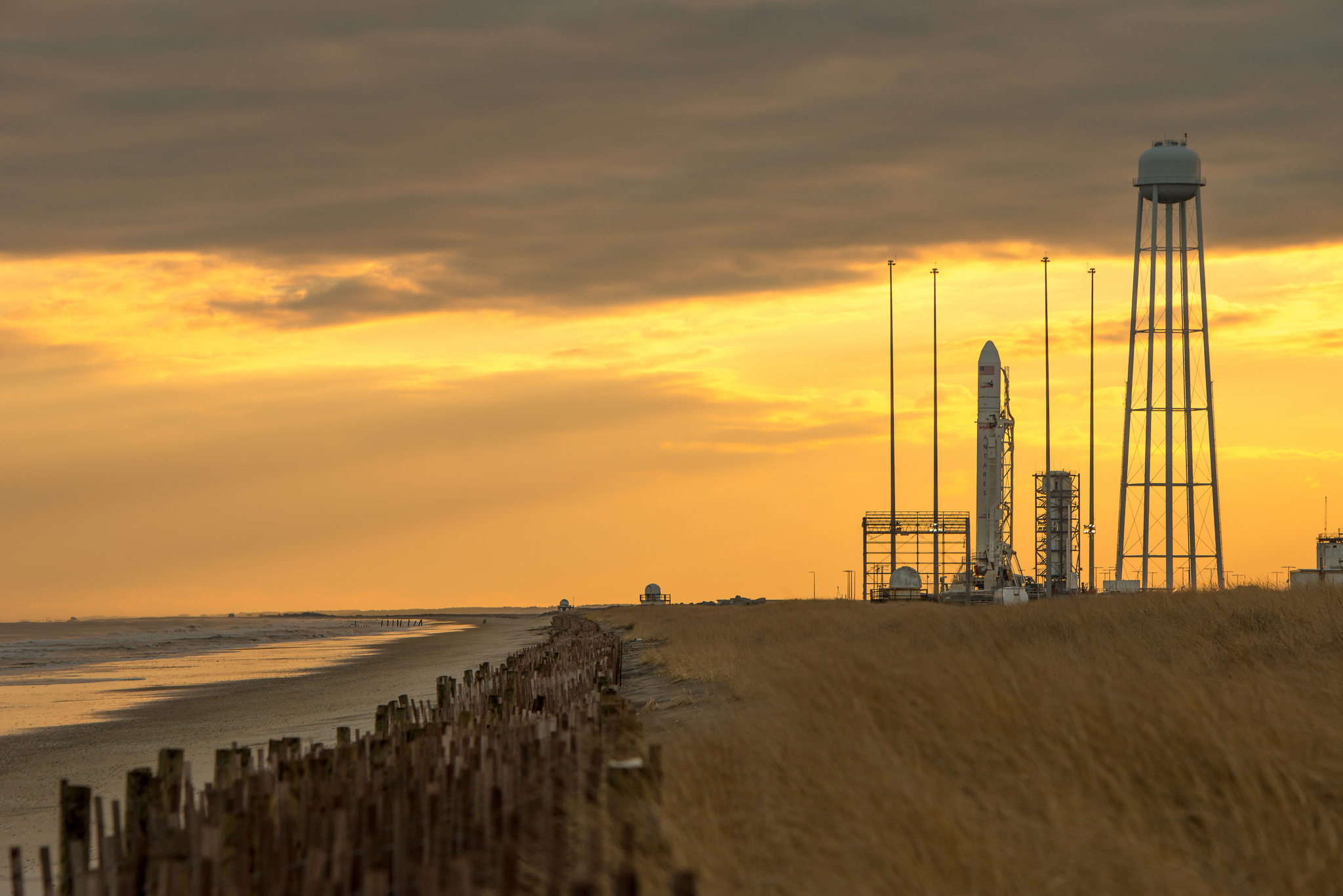
Editor's Update for 9 a.m. ET: Today's launch of an Orbital Sciences Cygnus cargo ship to the International Space Station has been delayed due to high solar radiation from an intense solar flare on Tuesday. Read the full story here: Huge Solar Flare Delays Private Rocket Launch to Space Station
WALLOPS ISLAND, Va. — A privately built robotic spacecraft is poised to blast off from Virginia's freezing cold Eastern Shore today (Jan. 8) on a debut delivery flight to the International Space Station, and you can watch it live online.
The commercial spaceflight company Orbital Sciences will launch its first Cygnus cargo mission from a pad here at NASA's Wallops Flight Facility at 1:32 p.m. EDT (1832 GMT) to deliver more than a ton of supplies for astronauts in orbit. The spacecraft will launch atop a commercial Antares rocket, also built by Orbital Sciences.
You can watch the Cygnus spacecraft launch live online here, courtesy of NASA TV. The webcast will begin at 1 p.m. EST (1800 GMT). The launch may also be visible to observers along the U.S. East Coast as it arcs out over the Atlantic Ocean, weather permitting. [How to See Orbital Sciences' Jan. 8 Rocket Launch (Visibility Maps)]
The unmanned Cygnus spacecraft is packed with 2,780 pounds (1,260 kilograms) of gear for the International Space Station, including a space ant colony, 33 small cubesat satellites and 23 other experiments designed students from across the country. More than 10,000 students will ultimately be involved in the experiments, NASA officials said.
If all goes well, the Cygnus spacecraft is expected to arrive at the space station on Sunday (Jan. 12), where it will be captured by astronauts using the outpost's robotic arm. The mission — called Orb-1 — is Orbital Sciences' first official Cygnus delivery missions to the station for NASA under a $1.9 billion cargo contract. The company plans to launch eight resupply flights in all.
"This will be the first of three contracted cargo delivery missions for us this year," Orbital Sciences executive vice president Frank Culbertson, a former NASA astronaut, told reporters Tuesday.
Breaking space news, the latest updates on rocket launches, skywatching events and more!
Orbital initially planned to launch today's Cygnus mission in mid-December, but postponed the flight to allow astronauts on the station time to complete emergency spacewalk repairs to the outpost's cooling system. A Jan. 7 launch target was also delayed due to extremely cold temperatures.
Visible from U.S. East Coast
Depending on your viewing location, the launch may be visible low over the horizon, reaching an altitude of 5 and 25 degrees up in the sky. (Your closed fist held out at arm's length covers about 10 degrees of the sky).
"Viewers all along the East Coast there will have a chance to catch a glimpse of it in the sky when we do launch in the afternoon," said NASA's Wallops test director Sarah Daugherty in a prelaunch press conference.
A viewing location with a horizon clear of trees or high buildings is recommended. Viewing maps provided by Orbital Sciences suggest the launch could be visible from as far north as Boston, Mass., and northern South Carolina in the south, and reach inland to parts of West Virginia. Observers north of the Wallops Island, Va., launch site should look toward the south, while viewers in southeastern Virginia and South Carolina should look toward the north.
Editor's note: If you have snap an amazing photo of the Antares/Cygnus launch today and would like to share it with SPACE.com for a possible story or gallery, send images and comments in to spacephotos@space.com.
Daugherty said there is a 95-percent chance of good weather for today's launch attempt despite the freezing cold. Temperatures are expected to be in the low 30s Fahrenheit, but otherwise clear. Orbital Sciences officials say the Antares rocket is designed to launch in temperatures as low as 20 degrees F (minus 6 degrees Celsius).
NASA is also tracking a massive solar flare that erupted from the sun on Tuesday. The X1.2-class solar flare is the strongest type of storm the sun can experience, and erupted around mid-day from a massive sunspot facing the Earth. When aimed directly at Earth, the strongest X-class solar flares can endanger astronauts and interfere with satellite signals in space. [See video of the X1.2 solar flare of Jan. 7]
Dan Hartman, NASA's deputy space station program manager, told reporters that the agency is tracking the solar storm.
"The radiation looks good right now, so so far we're not tracking any problems with that," he said.
Major step for commercial spaceflight
Orbital Sciences' Cygnus spacecraft are cylindrical vehicles designed to carry payloads of up to 4,400 lbs. (2,000 kg) to the International Space Station. The bus-size spacecraft are 17 feet long (5 meters) and are made up of a pressurized compartment built by Italian aerospace company Thales Alenia Space and an Orbital-built service module housing the vehicle's thrusters and solar arrays.
The Antares rocket launching Cygnus will lift off from Pad-0A at NASA's Wallops Flight Facility. The pad is overseen by Virginia's commercial Mid-Atlantic Regional Spaceport.
Orbital is one of two commercial companies tapped by NASA to use robotic spacecraft to keep the International Space Station stocked with supplies. The other company is Space Exploration Technologies (better known as SpaceX) of Hawthorne, Calif., which has already launched two delivery missions to the station for NASA under a $1.6 billion deal. SpaceX is expected to launch its third of 12 planned missions for NASA on Feb. 22, Hartman said.
Orbital Sciences, meanwhile, launched its first Antares rocket in an April 2013 test flight that was followed four months later by a successful Cygnus demonstration mission.
Visit SPACE.com today for complete coverage of Orbital Sciences' Cygnus cargo launch to the International Space Station. SPACE.com partner Spaceflight Now is also offering updates via its Cygnus Mission Status Center.
Email Tariq Malik at tmalik@space.com or follow him @tariqjmalik and Google+. Follow us @Spacedotcom, Facebook and Google+. Original article on SPACE.com.
Join our Space Forums to keep talking space on the latest missions, night sky and more! And if you have a news tip, correction or comment, let us know at: community@space.com.

Tariq is the award-winning Editor-in-Chief of Space.com and joined the team in 2001. He covers human spaceflight, as well as skywatching and entertainment. He became Space.com's Editor-in-Chief in 2019. Before joining Space.com, Tariq was a staff reporter for The Los Angeles Times covering education and city beats in La Habra, Fullerton and Huntington Beach. He's a recipient of the 2022 Harry Kolcum Award for excellence in space reporting and the 2025 Space Pioneer Award from the National Space Society. He is an Eagle Scout and Space Camp alum with journalism degrees from the USC and NYU. You can find Tariq at Space.com and as the co-host to the This Week In Space podcast on the TWiT network. To see his latest project, you can follow Tariq on Twitter @tariqjmalik.
